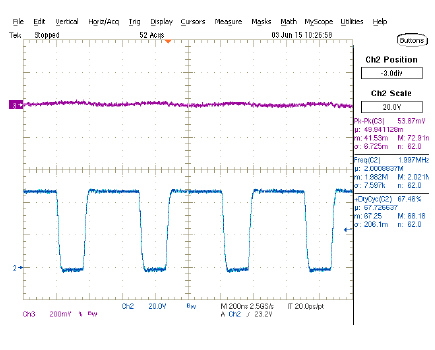Hi
We have evaluated LMR16006YEVM at the following condition. However the device repeats start and stop because of thermal shutdown.
(Condition : Vin=48V, Vout=31V, Io=0.6A. Fsw=2.1MHz
Modified : resistor of voltage divider , Inductor : 47uH(DCR=150mohm), Diode (VM=0.85V) )
We have some question for this phenomenon.
1. Is it possible to operate at these condition?
2. We obtained the switching waveform before shutdown. The rise and fall time of switching looks gently
This means the switching loss is increased. How much is the Qg and TR/TF of integrated MOSFET?
Our customer is going to use this device at the above condition.
Please let me know if you have any question.
Regards,
Koji Hamamoto


